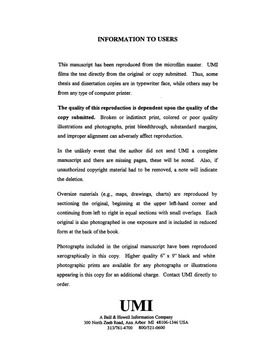| dc.contributor.advisor | Richman, Michael B., | en_US |
| dc.contributor.author | Gong, Xiaofeng. | en_US |
| dc.date.accessioned | 2013-08-16T12:30:26Z | |
| dc.date.available | 2013-08-16T12:30:26Z | |
| dc.date.issued | 1998 | en_US |
| dc.identifier.uri | https://hdl.handle.net/11244/5764 | |
| dc.description.abstract | A series of model integrations, forced with different SST perturbations over the tropical central and eastern Pacific, has been performed using the ECHAM4 GCM in an attempt to simulate the spatial patterns in tropical atmospheric interdecadal variability and investigate the physical processes and mechanisms responsible for the formation and maintenance of these spatial changes. The resultant height changes from the idealized simulations show large similarities to the patterns found in the reanalysis. Cumulus convection and atmospheric heat transport are found to be the two key physical processes which are largely responsible for the tropical-wide height increase, especially in the upper tropospheric layer. Due to the anomalous SST increase over the central Pacific and eastern Pacific, more latent heat is released from cumulus convection, warming the local atmosphere. Part of the heat energy is transported away by the enhanced local Hadley cell and westerly subtropical jets, leading to the height changes in non-forcing regions. Such transport mechanisms are largely responsible for the upper level height changes over the tropical eastern Pacific and Atlantic regions. In addition, the anomalous sinking motion also plays a role in the height increase over the tropical Atlantic Ocean in the upper troposphere. The low level height increase over the tropical Indian and western Pacific regions can be largely attributed to the dynamic effects of anomalous sinking motions there. | en_US |
| dc.description.abstract | In this research, the interdecadal atmosphere-ocean variability is further investigated from a different perspective, with an eye toward shedding light on the tropical Pacific. A large spatial boreal winter SST anomaly structure is found over the central and eastern Pacific on the decadal time scale. The temporal variation of such signature exhibits a notable interdecadal change, with an evident basic state jump from negative to positive anomaly about the long-term mean in the 1976/77 winter. Associated with this SST variation, the tropical height and circulation also experiences a similar interdecadal variation. In the spatial patterns of the leading geopotential height PC modes from the NCEP/NCAR reanalysis data, the dominant feature is a tropical-wide height change structure through the entire troposphere, with the most significant change in the upper tropospheric layer. The temporal fluctuation of this height mode shows a strikingly consistent trend and sudden jump in the 1976/77 winter with the SST interdecadal trend. Prior to the 1976/77 winter, the tropical height field is in negative anomalous time period and it reverses after the 1976/77 winter. | en_US |
| dc.format.extent | xvii, 221 leaves : | en_US |
| dc.subject | Physics, Atmospheric Science. | en_US |
| dc.subject | Climatic changes. | en_US |
| dc.subject | Ocean-atmosphere interaction Simulation methods. | en_US |
| dc.title | Recent interdecadal variations in the tropical atmosphere: Evidence and idealized GCM simulations. | en_US |
| dc.type | Thesis | en_US |
| dc.thesis.degree | Ph.D. | en_US |
| dc.thesis.degreeDiscipline | School of Meteorology | en_US |
| dc.note | Source: Dissertation Abstracts International, Volume: 59-12, Section: B, page: 6356. | en_US |
| dc.note | Adviser: Michael B. Richman. | en_US |
| ou.identifier | (UMI)AAI9914417 | en_US |
| ou.group | College of Atmospheric & Geographic Sciences::School of Meteorology | |
